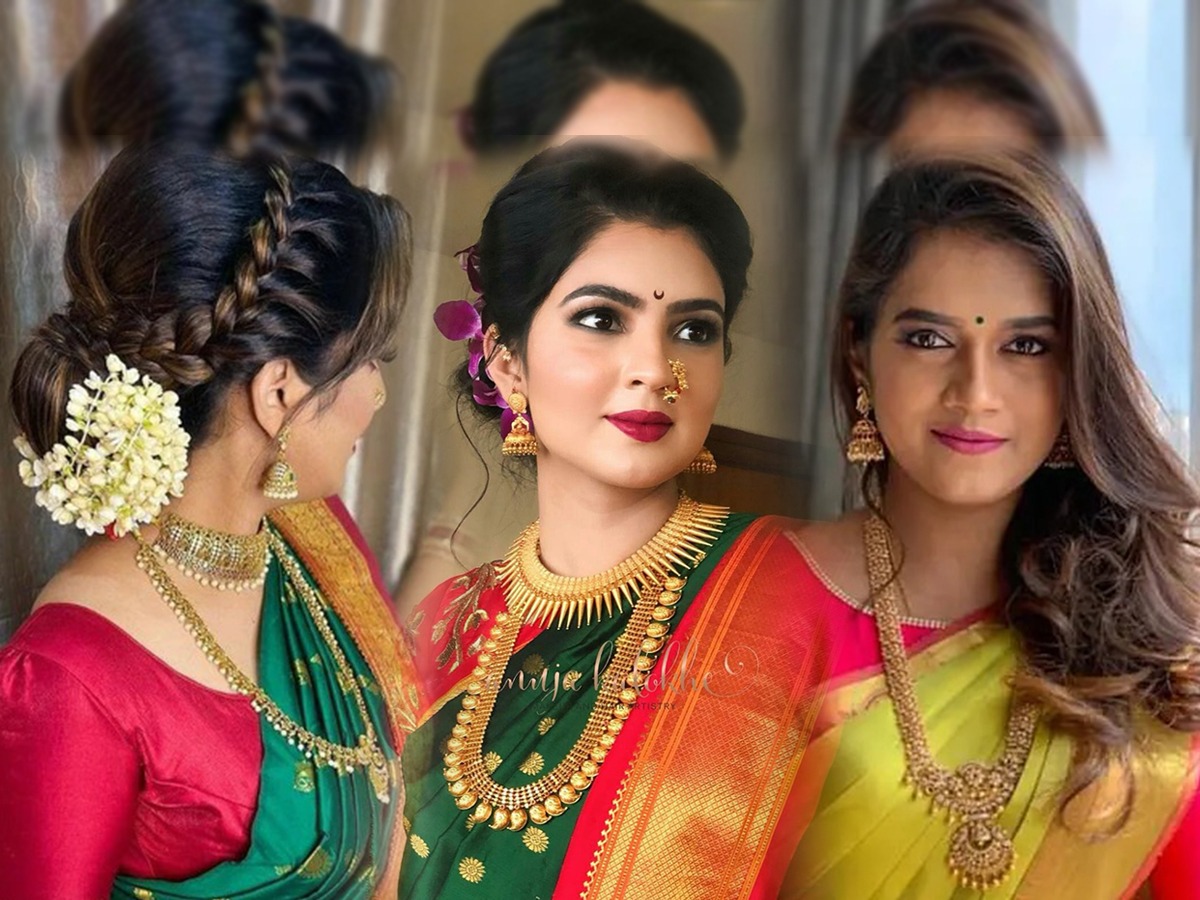The essence of South Indian dresses for girls With its richness and vitality, with some 20 states from Andhra Pradesh to Tamil Nadu interwoven like so many cultural threads into a colorful quilt, the unique hand-embroidered dresses are not only popular among local girls but also attract international attention. South Indian girls ‘dresses are not simply pieces of clothing; they symbolize a history, culture and sense of self. And so we enter into this world of wonder-—the world of South Indian attire. We discover the unique styles and variations that make these dresses both enduringly popular yet modern fashion accessories.
Saree: Timeless Elegance
Description: Saree is a popular South Indian dress which spans centuries and generations. The South Indian saree is typically a silk or cotton item featuring vivid colors and decorative patterns. Gold zari work (and in this case, an unusually tall shawl pin) are common design elements for the fabric worn by brides-to-be at weddings throughout Chennai and beyond. With the different styles of each state–Kanjeevaram silk sarees in Tamil Nadu, Kasavu sarees from Kerala and Ilkal sateen dye-woven ones that emanated out of Karnataka itself being but a few among many examples-South India has an especially special touch.
Variations: Young girls often wear half sarees, a hybrid that combines lehenga-style skirts and blouses with an asymmetric draping of the dupatta like a sari. But vibrantly colored ensembles are not just for festivals and special occasions, capturing the glamour of a traditional saree while still providing breatheability.
Pavadai Davani: Graceful Childhood
Description: The pavadai davani is a traditional South Indian dress for young girls which symbolizes innocence and purity. This outfit consists of a long skirt (pavadai), with an attached blouse whose flowing dupatta adds graceful movement. It is decorated in intricate embroidery, lace and colorful embellishments. Pavadai Davani is commonly worn at cultural activities, weddings and festivals.
Colors and Fabrics: They also make use of bright and contrasting colors that reflect the festive spirit common to South Indian celebrations. The softness of fabrics like silk and cotton provides comfort so that girls can take part in a variety of ceremonies and rites
Langa Voni: Celebrating Tradition
Description: A tunic worn by girls in Andhra Pradesh and Telangana is the Langa Voni, also known as Pattu Pavadai. The langa and voni are two pieces that form this ensemble. The costumes are frequently adorned with intricate embroidery, reflective work and gold borders; it is a fine example of South Indian craft.
Occasions: Langa Voni is worn frequently at religious ceremonies, weddings and cultural events. The rich hues and intricate trimmings give the attire a festive look which embodies spring, joy, and celebration.
Kerala Kasavu Mundu: Draping Gracefully
Description: Kerala Kasavu Mundu is the definition of simplicity and elegance. This attire is worn mostly by girls and women in Kerala. It consists of a white cotton mundu (skirt) with an accompanying blouse, both matching. The distinguishing feature is the gold-bordered Zari, which adds an elegant touch.
Occasions: Dressing in Kasavu Mundu is common during Onam and other cultural festivals of Kerala. With its understated beauty and easy to wear, it is the first choice for girls of all ages.
Modern Fusion Wear: Blending Tradition with Trend
Description: Today South Indian girl’s costumes have been influenced by a marriage of tradition and modern fashion. Silhouettes, fabrics and embellishments are all being tinkered with by designers as they attempt to preserve the flavor of South Indian culture while at the same time appealing to younger generations.
Popular Trends: Fusion wear for girls who want the best of both worlds Anarkali suits with South Indian-themed motifs, hybrid sarees that don’t require pleating, and crop top lehengas featuring traditional patterns are some choices.
Conclusion:
South Indian dresses for girls are a colorful portrayal of the region’s rich culture, integrating tradition and modernity. From the timeless elegance of sarees to the playful charm of Pavadai Davani and the simplicity of Kerala Kasavu Mundu, each attire tells a unique story. As South India continues to celebrate its diverse heritage, these dresses stand as a testament to the enduring beauty and significance of cultural identity in the realm of fashion. With each stitch, South Indian dresses for girls become not just garments but narratives, blending the past with the present. As young fashion enthusiasts embrace these sartorial stories, they embody a harmonious coexistence of tradition and trend, celebrating the diverse tapestry of South Indian culture in every stitch and embellishment.
South Indian dresses for women: South Indian dress for Women

